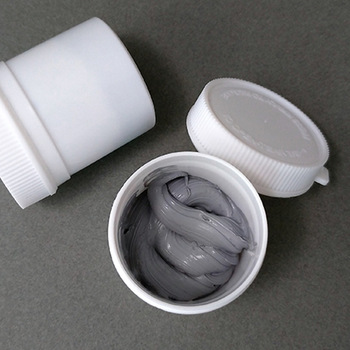In accordance with the European Union’s General Data Protection Regulation (GDPR), we are committed to safeguarding and ensuring your control over your personal data. By clicking “Accept All” you are permitting us to use cookies to enhance your browsing experience, assist us in analyzing website performance and usage, and deliver relevant marketing content. You can manage your cookie settings below. By clicking “Confirm” you are agreeing to the current settings.
How to properly apply thermal grease to CPU and GPU?
Why should thermal grease be used? Where to apply it?
The CPU, as the heart of the computer, generates an incredible amount of heat. The CPU is usually cooled through thermal grease, which directs heat into the heat sink. If the CPU is overheated, the system will experience a blue screen of death, crashes, reboots, etc. Therefore, CPU thermal conductivity becomes particularly important. Then, when installing a cooling fan, it is best to apply thermal grease between the heat sink and the CPU.
The purpose of thermal grease is not only to transfer the heat produced by the CPU to the heat sink quickly and evenly, but also to increase the thermal contact between the less flat lower surface of the heat sink and the CPU. Moreover, the thermal grease has a certain degree of adhesiveness and can keep the heat sink from separating from the CPU surface to a certain extent in case the metal spring plates holding the heat sink in place are slightly loosened by aging, thus maintaining the performance of the cooling fan.

Illustration of the heat flow between a heat sink and circuit board using T-Global S808 Thermal Grease
The effect of the thickness of the thermal grease applied on the heat dissipation:
In theory, the thinner the layer of thermal grease, the better, as long as it fills the gap between the CPU/GPU and the heat sink surface, because in terms of thermal performance, the thicker the thermal material, the higher the thermal resistance.How to apply thermal grease for better results?
There is no single standard for how thermal grease should be applied, but the rule is that it should be applied evenly, without air bubbles, without impurities and as thinly as possible. There are two main ways to apply thermal grease, one is to squeeze a dab of thermal grease onto the center of the CPU/GPU surface and then rely on the pressure of the heat sink to press the thermal grease evenly, the other way is to spread the thermal grease evenly onto the CPU/GPU surface. The first method is suited to heat sources with a small surface area, while the second method is more suitable for CPUs/GPUs with a larger surface area, but the second method is prone to get impurities and may create air bubbles when applied.The most correct SOP:
1. First clean the CPU core surface and the bottom of the heat sink with a high-purity solvent (e.g. high-purity acetone) and a lint-free cloth (e.g. camera lens cloth). Take care not to let your fingers touch the core and the heat sink surface. (If acetone is not available, alcohol can also be used)
2. Identify the area of the heat sink that is in contact with the CPU and apply a quantity of thermal grease to the center of the bottom area of the heat sink.
3. Put your finger into the plastic bag and press your finger back and forth to apply the thermal grease to the bottom of the heat sink until it is evenly distributed over the area in contact with the CPU. (Do not apply directly with your fingers).
4. Wipe the thermal grease off the bottom of the heat sink with a lint-free cloth. You can see that the area where the thermal grease has been applied to the bottom of the heat sink is different in color from the rest of the place, indicating that the silicone has evenly filled the gaps in the base.
5. Pick up a small amount of thermal grease with a clean tool (e.g. razor blade or clean knife) and place it in the corner of the CPU core (e.g. bottom left corner or something like that). Note that only a small piece will do.
6. Spread the thermal grease evenly over the entire core, starting from one corner of the CPU core using a razor blade or other clean tool. For the base of a normal heat sink, the thickness of the thermal grease is about that of a piece of paper. If the base of the heat sink is shiny and flat, the thermal grease can be as thin as translucent.
7. Make sure that there are no foreign objects on the base of the heat sink and the CPU core surface, then place the heat sink on the CPU, and press gently, without rotating or move the heat sink sideways, otherwise the thickness of the thermal grease between the heat sink and the CPU may be uneven. The thermal grease should not be too thick nor too thin, and there should be no foreign objects between the heat sink and the CPU.
